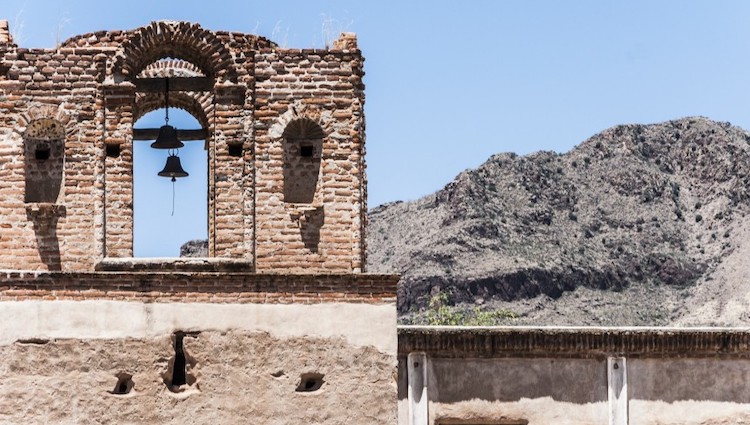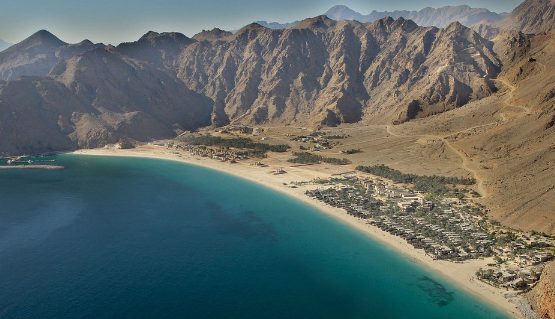Archeological vacations have skyrocketed as tourists find themselves wanting to experience history at the source as opposed to in a museum. At these hotels, you can channel your inner Indiana Jones and see historic sites up close and personal. Here are a dozen of our favorite historic and UNESCO World Heritage sites to visit, and the perfect places to stay.
Los Guachimontones, Mexico
Where to stay – NH Collection Guadalajara Providencia
The pyramids at Los Guachimontones are the only round pyramids in the world, and excavations have only just scratched the surface of the site. They were constructed approximately 2,000 years ago by the Teuchitlán culture that thrived in the Tequila Valley between 300 B.C. and 900 A.D., and are thought to have been part of a larger cultural center for worship and politics. In 1996 UNESCO added the whole region, including the nearby tequila distilleries, to its World Heritage List.
Chichén Itzá, Mexico
Where to stay – IBEROSTAR Grand Hotel Paraiso
Chichén Itzá is a complex of Mayan ruins on the Yucatán Peninsula. A massive step pyramid, known as El Castillo or Temple of Kukulcan, dominates the ancient city, which thrived from around 600 A.D. to the 1200s. Graphic stone carvings survive at structures like the Ball Court, Temple of the Warriors, and the Wall of the Skulls. You can also visit the cenote sagrado, or Sacred Cenote, an ancient pilgrimage site in times of drought and war. While you’re exploring in Playa del Carmen, be sure to check out the numerous cenotes open for swimming or scuba diving for a truly magical experience.
Greek Theatre of Taormina, Italy
Where to stay – NH Collection Taormina
In Italy it is almost impossible to take two steps without coming across some aspect of ancient history, and Taormina is no exception. Located on the coast of Sicily, it is home to countless well-preserved ruins including one of the most beautiful Greek theaters in the world, and a Byzantine chapel built of lava stone. In nearby Syracuse, just an hour and a half away by train and at one point one of Greece’s most important colonies, you can visit an archaeological museum full of Greek and Roman antiquities.
Edo Castle, Japan
Where to stay – Hotel Chinzanso Tokyo
Edo Castle was built in 1457 to be the center of Japan’s politics and home to the powerful Tokugawa shogunate for 260 years. Much of the original Edo Castle was destroyed over the years, with the main building burning down in 1873, but there are still many turrets, foundations and moats standing today that can be explored. Today the grounds serve as home to the Imperial Family, but their palace was not built over the grounds of the old castle to ensure it could still be accessed by the public.
The Great Wall of China
Where to stay – Wanda Vista Beijing
The Great Wall of China is a historical site that truly needs no introduction. At its peak it stretched over 5,000 miles across China, but it has now been reduced to several stretches of wall in varying states of disrepair. In the Beijing area, the wall dates mostly from the Ming Dynasty (1368-1644) when it was constructed to defend against raids by the Mongols to the north. The Badaling section is the best-preserved and includes restored military facilities, but Juyongguan is also worth a visit for its ancient towers and temples.
Istanbul Archaeology Museum, Turkey
Where to stay – Ajwa Hotel Sultanahmet
The Istanbul Archaeology Museum is a combination of 3 separate museums first constructed in 1881 – the Archaeological Museum, the Museum of the Ancient Orient, and the Museum of Islamic Art. Between the three buildings, there are an astonishing one million artifacts from various cultures on display. Recent construction of a tunnel under the Bosporus revealed 37 miraculously preserved shipwrecks, a Neolithic dwelling dating from around 6,000 B.C., graves, huts, cultivated farmland, tools, and thousands of human footprints, all on display at the Istanbul Archaeology Museum.
Tumacácori National Park, Arizona
Where to stay – Hacienda Del Sol Guest Ranch Resort
At this unique cultural crossroads in Southern Arizona, Apache, O’odham, and Yaqui peoples met and intermingled with European missionaries, settlers and soldiers. The first mission was built in 1691 and was continuously occupied, though changing hands all the while, until 1848 when it was abandoned due to harsh winters and increased Apache raids. In addition to the Tumacácori mission, there are also the Guevavi and Calabazas missions in the park.
Pu‘uhonua o Hōnaunau National Park, Hawaii
Where to stay – The Mauna Lani Bay Hotel & Bungalows
Pu‘uhonua o Hōnaunau National Historical Park preserves the site where, up until the early 19th century, Hawaiians who broke a kapu – an ancient sacred law – could avoid certain death by fleeing to this place of refuge. The offender would be absolved by a priest and freed to leave. The park is also home to the Royal Grounds, home to Hawaii’s royal class since before Captain Cook’s arrival in 1778, and even an abandoned fishing and farming village known as Ki’ilae Village.
The Alamo, Texas
Where to stay – The Stella Hotel
Known now as “The Shrine of Texas Liberty” and declared a UNESCO World Heritage Site in 2015, The Alamo has over 300 years of history and legend to speak of. Founded in 1716 as a Roman Catholic mission, it was converted first to a field hospital for the Spanish army in 1806 and then turned over to the Mexican army in 1821. During the Texas Revolution, it was surrendered to the Texan Army who were wiped out one year later at the Battle of the Alamo on March 6, 1836. From that moment on it became a part of Texas folk history, as “Remember the Alamo!” became a cry heard through the centuries.
Beit Guvrin, Israel
Where to stay – The Carlton Tel Aviv
It should come as no surprise that Israel is full of ancient historical sites ranging from ancient Roman to 12th century crusader. At Beit Guvrin, part of the larger Beit Guvrin-Maresha National Park, visitors can participate in an actual dig at Beit Guvrin. Known to be the ancestral home of King Herod, Beit Guvrin-Maresha is about an hour’s drive from Tel Aviv. Also nearby are Apollonia, a cliff-top Crusader fortress dating back 2,500 years, and Caesarea, home to a Roman amphitheater and other artifacts.
Delos, Greece
Where to stay – Myconian Villa Collection
The island of Delos is considered to be one of the most important Panhellenic settlements for its historical, mythological and archaeological significance. Accessible by boat from Mykonos, Delos was, according to mythology, the birthplace of Apollo and Artemis with evidence of habitation as early as 3,000 BCE. After the Peloponnesian War in the 5th century BCE, it was declared that not a single person could die or give birth on the island in order to prevent it from being claimed as an inheritance. After 168 CE, it was converted into a port and became one of the busiest in the Mediterranean and has been being excavated since 1872.
La Crypte Archéologique de Nice, France
Where to stay – Hotel Barriere Le Gray d’Albion
While digging a new tram line 20 feet under the Place Garibaldi in 2004, city workers quite literally dug up Nice’s past. The discovery of the Crypte Archéologique de Nice, a subterranean chamber nearly 6,000 square feet in diameter, provided an amazing look into the medieval city. The crypt holds the remains of the Pairolière Tower – destroyed by Louis XIV’s troops in 1706 – , an aqueduct that ran to the Sardinian King’s palace, a moat, and even a bridge that led to Turin, Italy.

















